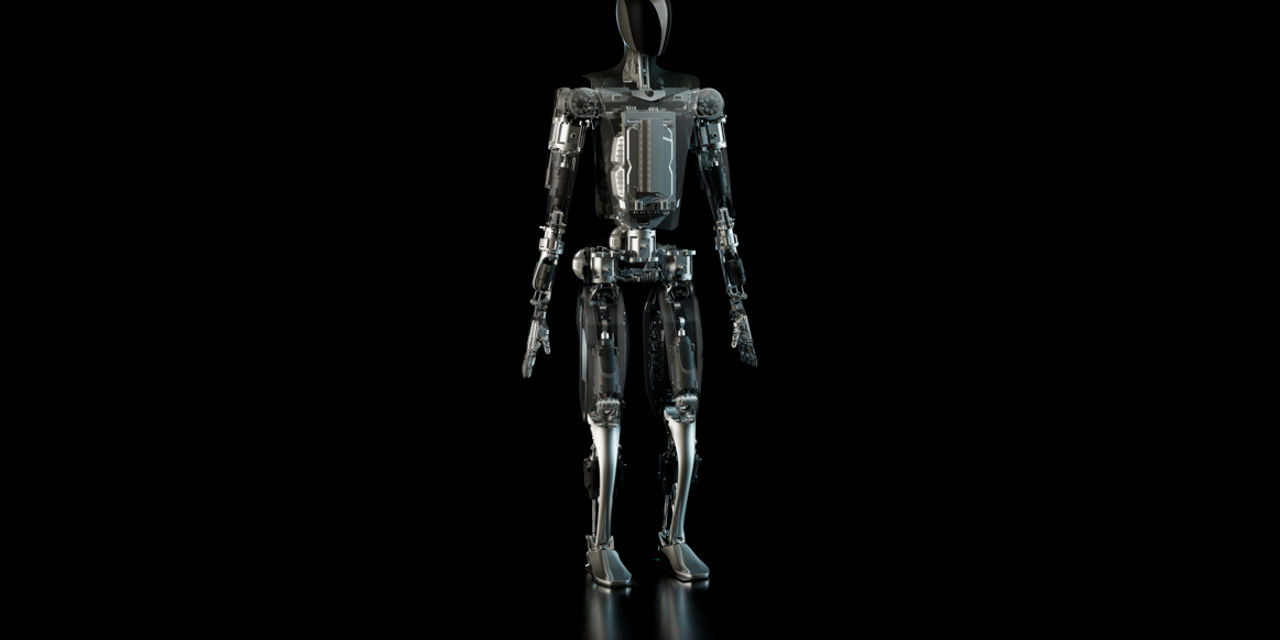Tesla’s Optimus humanoid robot has been attracting plenty of attention following the company’s AI event on Friday.
Two development versions of the Optimus bot were on show at Tesla Inc.’s
TSLA,
AI Day 2022. The company showed off a robot with exposed wires that walked onto the stage, turned, waved to the audience and briefly busted some dance moves. “The robot can actually do a lot more than we just showed you, we just didn’t want it to fall on its face,” said Tesla Inc. CEO Elon Musk, candidly.
A Tesla video also showed the robot performing tasks such as moving boxes and watering a plant.
A later-generation version of Optimus that had to be carried onto the stage was also on display at the AI Day event. “It wasn’t quite ready to walk, but I think it will walk in a few weeks,” said Musk. “We wanted to show you the robot, something that’s actually fairly close to what will go into production.”
Once on stage, the humanoid robot waved and moved its legs. The robot, which will have the ability to move all its fingers independently, also has opposable thumbs in both hands, enabling it to operate tools, according to Musk. “Our goal is to make a useful humanoid robot as quickly as possible,” he said. “We have also designed it using the same discipline that we use in designing the car, which is to design it for manufacturing such that it is possible to make the robot in high volume at low cost, with high reliability.”
See Now: Tesla busts latest AI moves, but stock falls as vehicle deliveries miss analysts’ targets
Musk stressed the importance of this. “You have all seen very impressive humanoid robot demonstrations, and that’s great, but what are they missing?” he said. “They are missing a brain — they don’t have the intelligence to navigate the world by themselves, and they are also very expensive and made in low volume.”
But the fact that the robot had to be carried out sparked scorn from some users on social media.
“The Tesla bot can barely stand on it’s own and 3 humans had to roll it out. This looks like a high school science project built in a garage,” tweeted @cacukck.
Other users made unfavorable comparisons between Optimus and the robots built by Boston Dynamics , which is famed for its development of sophisticated (and somewhat unsettling) robotic dogs and humanoids. Last year, Hyundai Motor Co. Ltd.
005380,
acquired a controlling interest in Boston Dynamics from Japan’s SoftBank Group Corp.
9984,
for $1.1 billion.
See Now: Tesla reports record deliveries, but numbers are still shy of analysts’ targets
“Honestly, Boston Dynamics must be in hysterics right now,” tweeted James Bareham, creative director, brand licensing at Vox Media.
“The potential for Optimus is, I think, appreciated by very few people,” said Musk during the Tesla event, just before the robot was moved behind him to the edge of the stage, amid some laughter. “As usual, Tesla demos are coming in hot,” the CEO quipped.
“There’s still a lot of work to be done to refine Optimus and improve it — obviously, this is just Optimus version one,” added Musk.
The Tesla chief said that, ultimately, millions of Optimus robots could be made, with each costing much less than a car. “I would say probably less than $20,000, would be my guess.” He anticipates that the robots could be sold to consumers in three to five years.
So, how important is Tesla’s robotics move? Dennis Hong, professor of mechanical and aerospace engineering at UCLA, and director of the University’s Robotics & Mechanism’s Laboratory, says that Optimus could be a stepping stone for a bolder robotics future.
“I am aware of critics who say that the prototype had nothing new that they haven’t seen elsewhere, and that there are other more impressive humanoids,” he tweeted. “There are also people who have doubts on the aggressive timeline Elon had proposed, and I do not necessarily disagree with them.”
“That being said, I am a true believer of the future with humanoid robots and their eventual applications, that they will be used in our everyday lives ‘one day’ and make our lives better,” Hong added, in a subsequent tweet. “And for that to happen, we need to start somewhere and project Optimus is just that.”
However, the robotics expert is unsure about Tesla’s goal of mass producing the robots.
“Though it may be used in a structured environment in a limited way (very simple tasks in a very carefully controlled factory maybe?) this particular model still lacks some of the fundamental technology for locomotion & manipulation needed for use in a general situation,” he tweeted.
Christian Hubicki, assistant professor at Florida State University and director of the University’s Optimal Robotics Lab, also thinks there were positives in Tesla’s Optimus demo. “Am I blown away? No. Am I laughing? No,” he tweeted.
“First, the team did a good job. They came a long way in about a year(?), going from zero-to-robot from the ground up,” he added. “Also, doing a live demo without a tether (safety catch rope) is braver than people know.”
Tesla appears to be using a method called Zero-Moment Point, which has been around since the nineties, to make Optimus walk, according to Hubicki.
“It’s pretty safe, but not mindblowing in 2022,” he tweeted.
Tesla shares fell 7.3% on Monday, weighed down by the company’s Sunday announcement that it produced over 365,000 vehicles and delivered over 343,000 in its just-completed third quarter. While the number of vehicles delivered marked a record for Tesla, it was shy of Wall Street estimates. Analysts were looking for about 371,000 deliveries, according to FactSet data.
The S&P 500 Index
SPX,
was up 3% on Monday.
